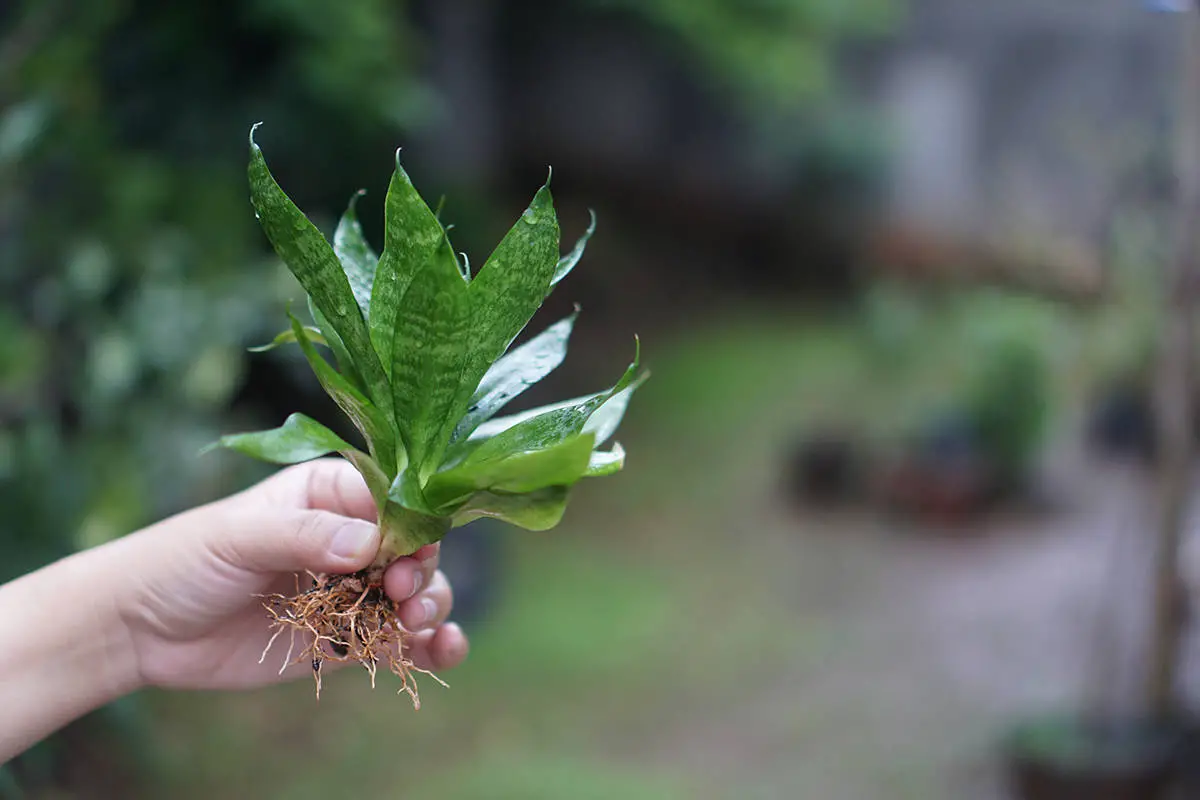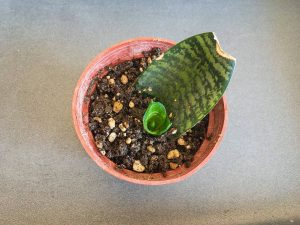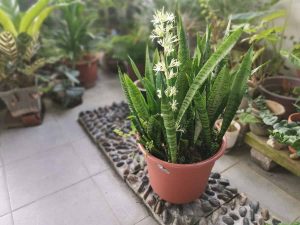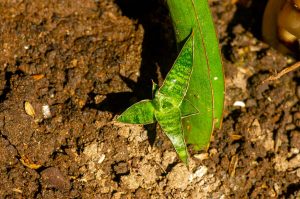Snake plants, also known as Dracaena trifasciata, are popular houseplants that are both beautiful and easy to care for. One of the great things about this hardy, low-maintenance plant is that you can propagate it in several different ways.
The most common ways to propagate snake plants include division, rooting leaf cuttings in water, and planting cuttings straight into soil. Each method has its own advantages and level of simplicity. Let’s dive into these methods and discover which one works best for you.
Table of Contents
Benefits of Propagation
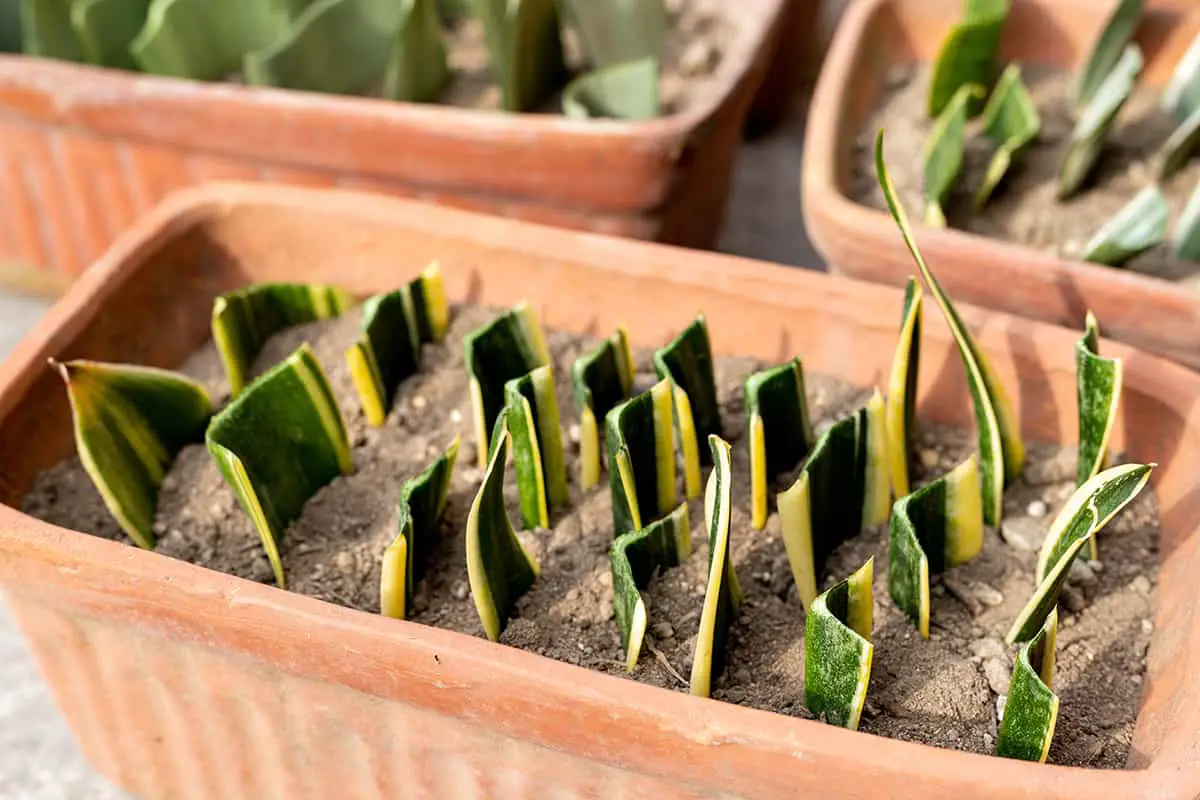
Propagating snake plants provides several advantages.
Firstly, it allows you to expand your collection without purchasing new plants. Secondly, you can share cuttings with friends, giving them a head start with an already-established plant. Finally, propagation helps rejuvenate older snake plants by promoting new growth.
Best Time for Propagation
The ideal time to propagate snake plants is during their active growing season, typically spring and summer. This is when the plants have more energy to produce new roots, helping the cuttings establish themselves faster.
However, with proper care, snake plants can also be propagated in other seasons, albeit at a slower pace. Remember to always use clean tools and keep the environment warm and humid to ensure successful propagation.
Methods of Propagating Snake Plants
Division Method
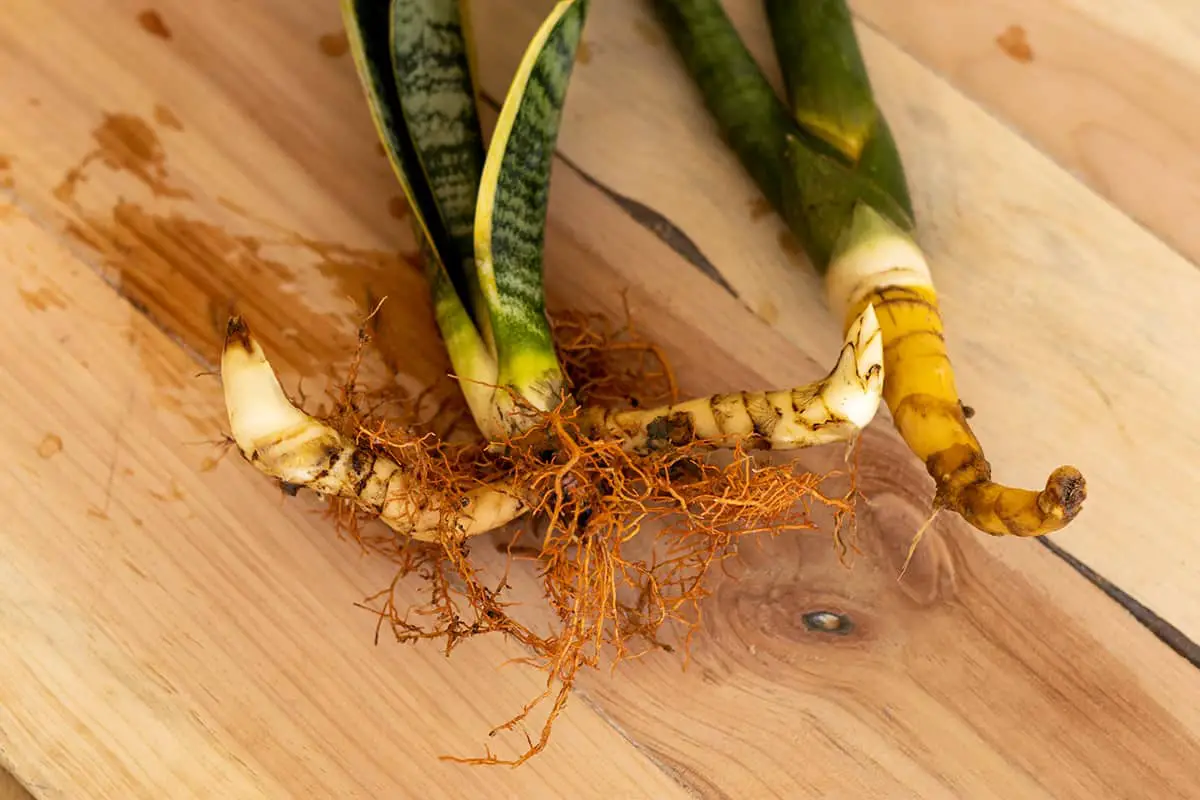
The Division method is an effective way to propagate snake plants. First, remove the snake plant and its roots from the pot. Then, carefully use a sharp knife or pruner to separate the root ball into sections. Each section you create will eventually grow into a new plant.
Leaf Cuttings in Soil
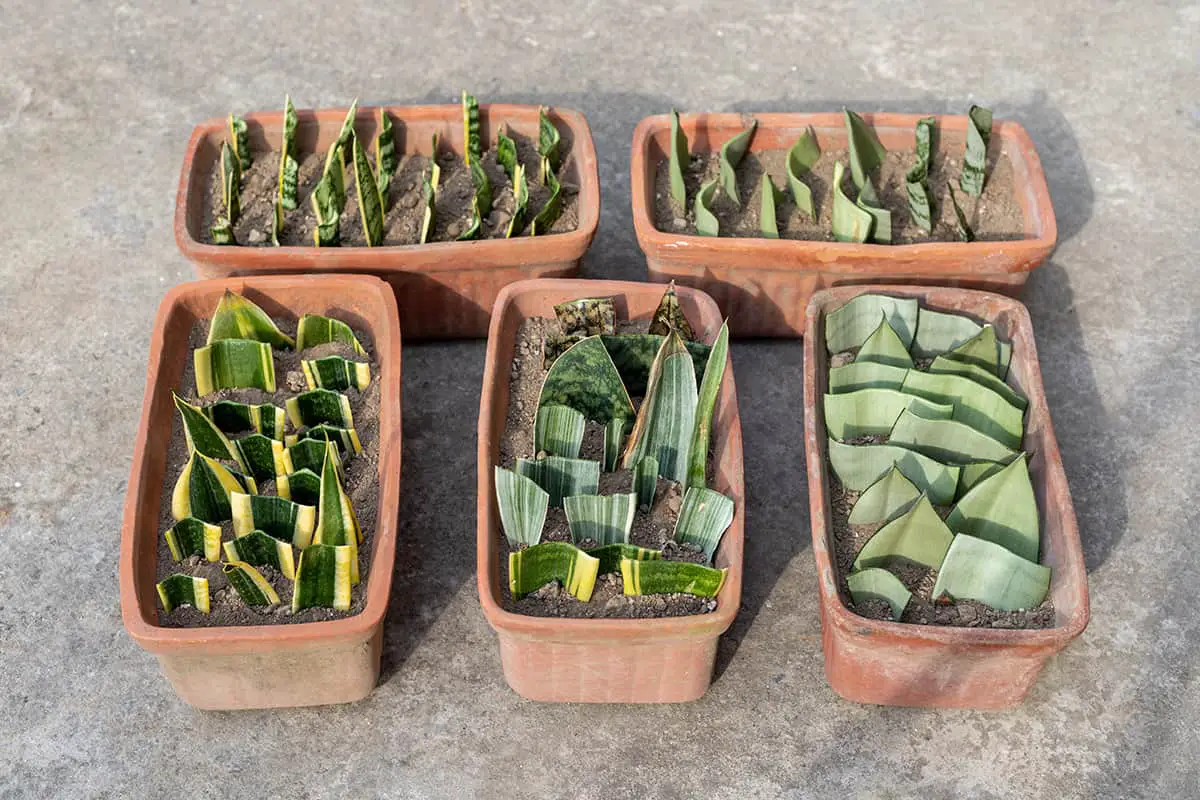
Another way to propagate snake plants is by taking leaf cuttings in soil. Here’s how to do it:
- Cut a healthy leaf from the parent plant.
- Allow the cutting to dry for a day or two.
- Plant the cutting directly in soil.
Keep the soil moist but not wet and ensure sufficient light for your cutting.
Leaf Cuttings in Water
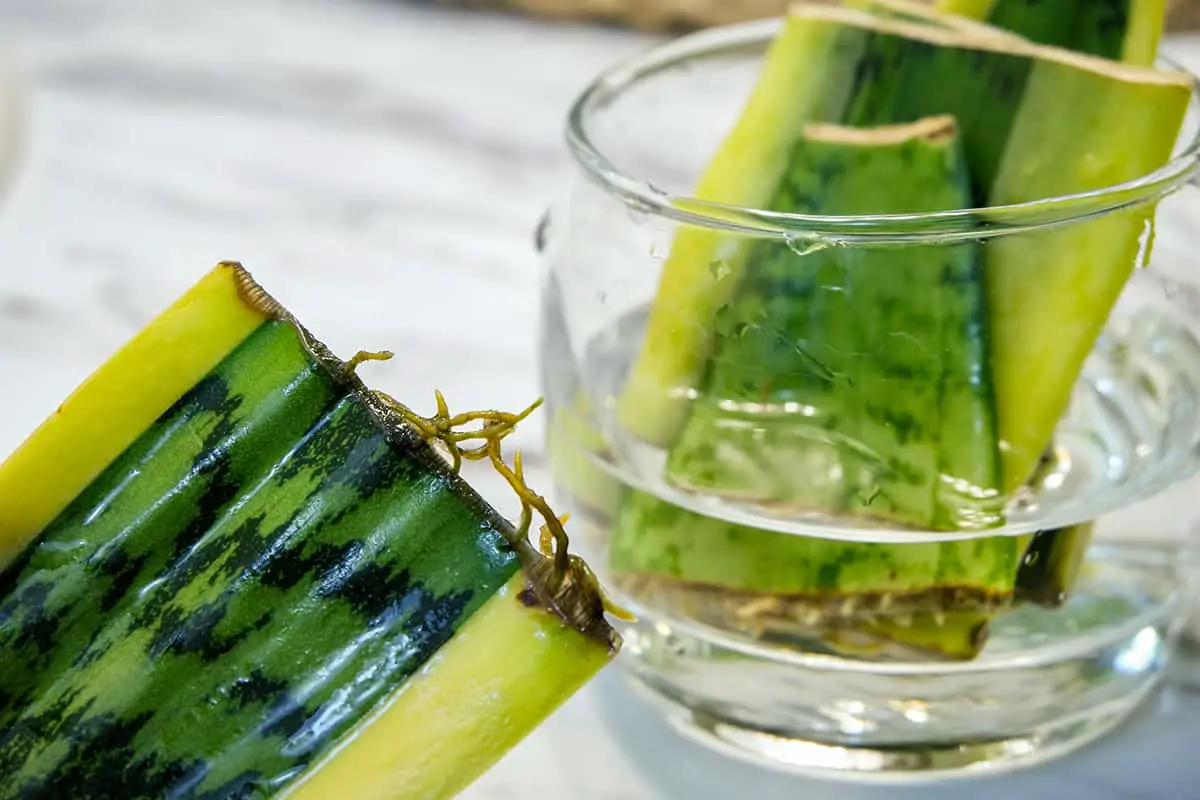
You can also propagate snake plants using leaf cuttings in water. Follow these steps:
- Cut a healthy leaf from the parent plant.
- Place the cut end in a glass or jar of water.
- Change the water regularly to prevent stagnation.
Wait for roots to form and then transplant the cutting into the soil.
Rhizome Cuttings
Rhizome cuttings are a method of plant propagation that involves separating and planting sections of the rhizomes to grow new plants. To do that.
- Remove the plant from its pot and locate rhizomes (thick, underground stems).
- Gently separate one or more rhizomes from the parent plant.
- Plant the rhizomes in fresh soil.
In a few weeks, the rhizomes will develop into new plants.
Propagation Care and Tips
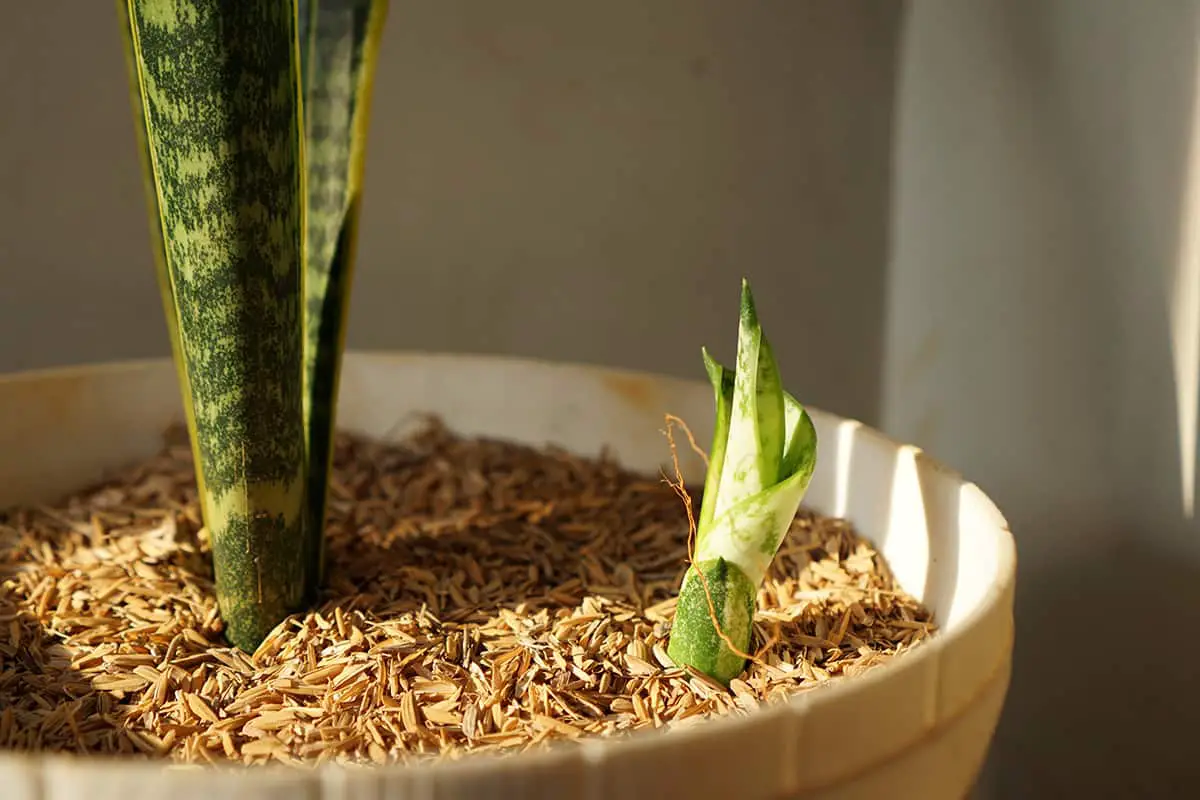
Watering
Here are some key tips for watering your propagated snake plants:
- Consistency: Maintain a consistent watering schedule.
- Amount: Provide enough water to keep the soil slightly moist but not overly wet.
- Frequency: Generally, it is best to wait until the top inch of soil dries out before watering again.
Soil
To promote healthy growth, your snake plants will require a well-aerated and well-draining soil mix. Using materials like the following can optimize the soil mixture:
- Sandy: Adding sand to your potting mix can improve drainage and aeration.
- Loamy: Loamy soil contains a balance of sand, silt, and clay, providing the right nutrients and structure for the plants.
- Perlite: This volcanic rock can increase aeration and drainage, while also retaining moisture.
Light
Proper lighting is essential for the successful propagation of your snake plants.
- Brightness: Snake plants thrive in bright, indirect light, but can also adapt to lower light levels.
- Duration: Aim for at least six hours of indirect sunlight per day.
- Sunburn: Avoid direct sunlight, as it can burn the leaves and damage the plant.
Troubleshooting Propagation
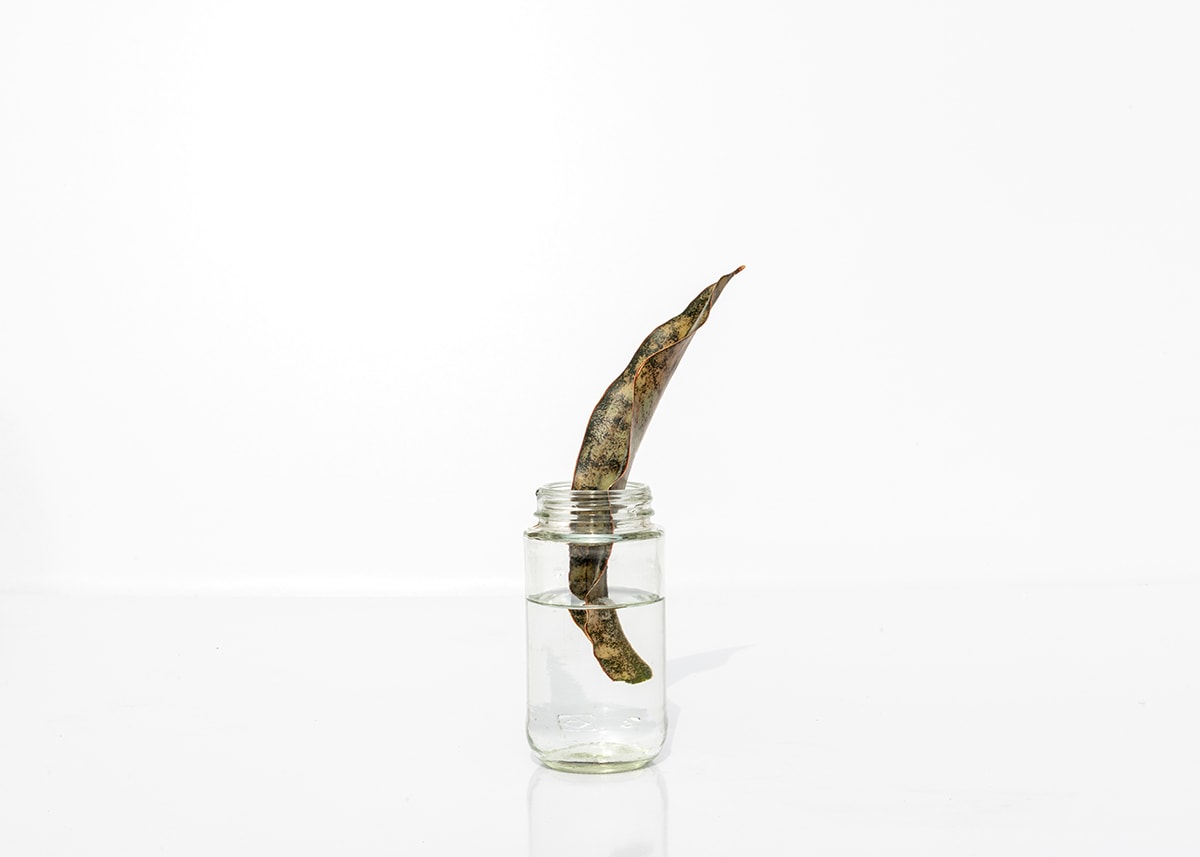
Common Issues
Propagating snake plants may present some challenges. The most common issues include rot, slow root development, and fungus. To prevent these problems, follow the necessary care tips and solutions outlined below.
Preventing Rot and Disease
When propagating your snake plant, it is crucial to avoid overwatering, as this can cause root rot and inhibit the development of new roots. To effectively manage water intake, it is advisable to use well-draining soil, ensuring that you only water the plant once the soil has completely dried out.
This practice helps prevent water from stagnating around the roots. Additionally, maintaining low humidity levels is important to deter fungal growth, which can compromise the health of your plant.
Moreover, before beginning the propagation process, it is essential to thoroughly inspect your snake plant for any signs of pests or diseases. Starting with a healthy plant significantly increases the likelihood of successful propagation.
Encouraging Root Development
A key part of successful propagation is root development. For the best results, follow these steps:
- Use a sterile, sharp knife or scissors to cut the leaf.
- Dip the cut end in rooting hormone (optional).
- Place the cutting in water, moist soil, or a propagation medium.
To further encourage root growth:
- Provide bright, indirect light.
- Maintain a warm environment (above 70°F / 21°C).
- Be patient and give your snake plant time. Root development can take several weeks or more.
Conclusion
By exploring the various methods detailed in this article, from division to leaf and rhizome cuttings, you’re now equipped to expand your collection and share the joy of gardening with others. Remember, the best time for propagation is during the spring and summer months, but with patience and proper care, you can achieve success at any time of the year.
